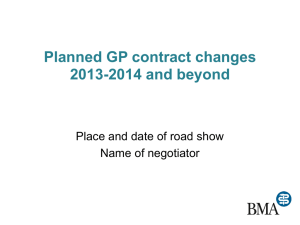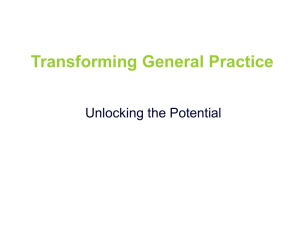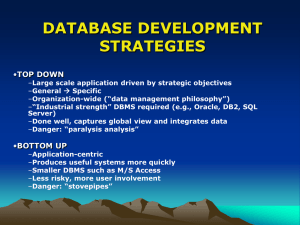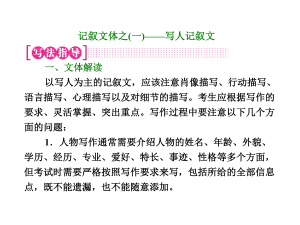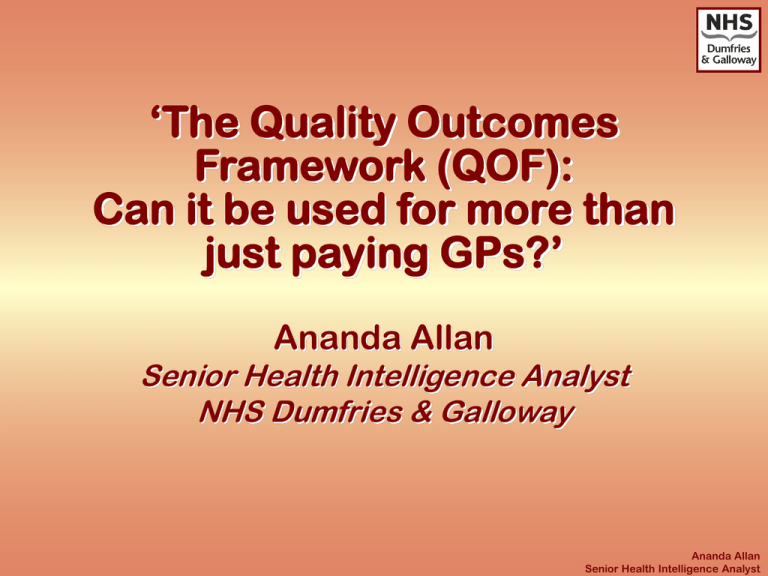
‘The Quality Outcomes
Framework (QOF):
Can it be used for more than
just paying GPs?’
Ananda Allan
Senior Health Intelligence Analyst
NHS Dumfries & Galloway
Ananda Allan
Senior Health Intelligence Analyst
Today’s talk will cover…
• What is the QOF?
• What else can QOF be used for?
– Our understanding of patient
populations
– Comparing disease registers
– Geographical distribution of disease
– Referral and Admission patterns
Ananda Allan
Senior Health Intelligence Analyst
About the QOF
• Started 2004 as part of new GP contract
• “A voluntary system of financial incentives…
rewarding contractors (GPs) for good
practice through participation in an annual
quality improvement cycle”
• Pays GPs for:
– looking after patients with specific chronic
illnesses
– qualitative practice improvement measures
• 134 indicators overall in 2010/11
• 20 conditions across 80+ clinical indicators
Ananda Allan
Senior Health Intelligence Analyst
1. Patient Populations: accurate
count of the full practice lists…
• There are different ways of counting D&G
patients:
– NRS (was GROS) estimate June 2010: 148,190
– CHI residents May 2010: 154,184
– CHP (QOF) headcount July 2010: 155,381
• There may not be much difference
between CHI residents and CHP (1,200)
but these patients belong to only 3
practices!
Ananda Allan
Senior Health Intelligence Analyst
700
150
470
N.B. For those of you who are wondering why this doesn’t add up to 1,200…
Ananda Allan
we have 200 patients living in D&G registered with an English GP in Senior
Longtown!
Health Intelligence Analyst
This is important because:
• We can now calculate accurate GP
practice activity rates using the CHP
headcounts, thanks to the QOF
• Prior to the QOF, GP populations were
not regularly published
• Publishing these figures nationally has
forced transparency
Ananda Allan
Senior Health Intelligence Analyst
2. Disease Registers
• Prior to the release of the QOF we had
two sources for disease prevalence:
– Individual disease registers/audits
• Limited number of diseases and focus
on acute activity: diabetes, stroke, renal
failure, cancer audits
– Continuous Morbidity Recording (CMR)
• 70 ‘spotter’ practices producing agespecific rates (evolved into PTI)
– Or… write out to every practice and ask!
Ananda Allan
Senior Health Intelligence Analyst
Comparing Local Diabetes
Register with CMR Estimates…
7000
6141
6000
5834
5000
4000
3000
2788
2000
1000
0
CMR Age-Specific Rates 2002
applied to Board Population 2004
(All ages)
Local Diabetic Register
(includes under 18s)
July 2004
QOF disease register
for Diabetes (18+)
March 2005
Now SCI-DC Diabetes Register Co-ordinates with EMIS nightly
Ananda Allan
Senior Health Intelligence Analyst
QOF disease prevalence figures
are not without problems…
Condition
Prevalence
Condition
Prevalence
Stroke
Palliative Care
New Depression 18+
Mental Health
Learning Disability 18+
Hypothyroidism
High Blood Pressure
Heart Failure
Epilepsy 18+
Diabetes 17+
2.3%
0.2%
8.7%
0.8%
0.4%
3.5%
14.8%
0.9%
0.7%
4.7%
Dementia
CVD Risk
COPD
Chr Kidney Dis 18+
CHD
Cancer
Atrial Fibrillation
Asthma
Obesity 16+
0.9%
1.0%
2.3%
3.0%
5.1%
1.9%
1.7%
5.8%
7.6%
The denominator is still ALL ages; overlap?
Ananda Allan
Senior Health Intelligence Analyst
3. Mapping the geographical
burden of disease
• Will QOF disease prevalence follow
patterns of area deprivation?
• Can we add value to existing GIS
analysis?
Ananda Allan
Senior Health Intelligence Analyst
Different in Urban areas?
Ananda Allan
Senior Health Intelligence Analyst
4. Correlating Disease
Prevalence to Acute Activity
• Some studies make an a priori assumption
that disease prevalence correlates with
emergency admissions
• It has been shown that recorded prevalence
of COPD accounts for 21.9% of admission
variance (the APHO estimated prevalence
was an even better predictor, accounting for
45.1%) (Calderón-Larrañaga et al, Thorax 2011)
• However, local correlations have been
disappointingly inconclusive
Ananda Allan
Senior Health Intelligence Analyst
QOF Prevalence
New Referral Rates to Cardiology
and Diabetes & Endocrinology
vs. QOF Prevalence
9%
8%
7%
6%
5%
4%
3%
2%
1%
0%
New Referrals ≈ Incidence … ≠ Prevalence?
2
R = 0.0005
2
R = 0.0235
Coronary Heart Disease
Diabetes
0
4
8
12
16
20
24
28
Indirectly Standardised Referral Rates
per 1,000 Population (Age/Sex/SIMD09v2)
Ananda Allan
Senior Health Intelligence Analyst
QOF Prevalence
Emergency Admission Rates for
All Heart Disease
vs. QOF CHD Prevalence
9%
8%
7%
6%
5%
4%
3%
2%
1%
0%
2
R = 0.0729
Coronary Heart Disease
0
2
4
6
8
10
12
14
Indirectly Standardised Emergency Admission Rates
per 1,000 Population (Age/Sex/SIMD09v2)
Ananda Allan
Senior Health Intelligence Analyst
Conclusions from the published
papers…
1. Bankart et al,
High Emg Adm = closer to hospital,
Emerg Med J (2011) small list size, older (removed CHD
[2 PCT England]
prevalence), white ethnicity, female,
deprivation, not seeing own GP
2. Purdy et al,
High Emg Adm = deprivation, CHD
Public Health
prevalence, smoking but not QOF
(2011) [All England]
quality of care factors for CHD
3. Purdy et al, J
High Emg Adm = deprivation, Asthma
Health Serv Res
and COPD prevalence, smoking, urban,
Policy (2011) [All
closer to hospital, bed availability
England]
4. CalderónLarrañaga et al,
Thorax (2011) [All
England]
High Adm = deprivation, COPD QOF
and undiagnosed prevalence, smoking,
lower flu jabs, worse GP access/staffing
Ananda Allan
Senior Health Intelligence Analyst
So…
• Too many other factors to use
prevalence in isolation?
• Small rural board = insufficient sample?
• Under-diagnosis skewing figures (e.g.
COPD)?
• Despite the results… Examining outliers
has led to new case-finding
Ananda Allan
Senior Health Intelligence Analyst
In conclusion…
• QOF has given added value to other
health information
• What we really need is:
– Age/Sex breakdown of QOF prevalence
– Knowledge of co-morbidity (overlap)
• QOF Calculator not designed to extract
this (and does not hold this)
• We will continue to explore…
Ananda Allan
Senior Health Intelligence Analyst
Acknowledgments
• Dr Andrew Carnon, Consultant in
Public Health Medicine
• Carolyn Hunter-Rowe, Senior Health
Intelligence Analyst
Ananda Allan
Senior Health Intelligence Analyst




